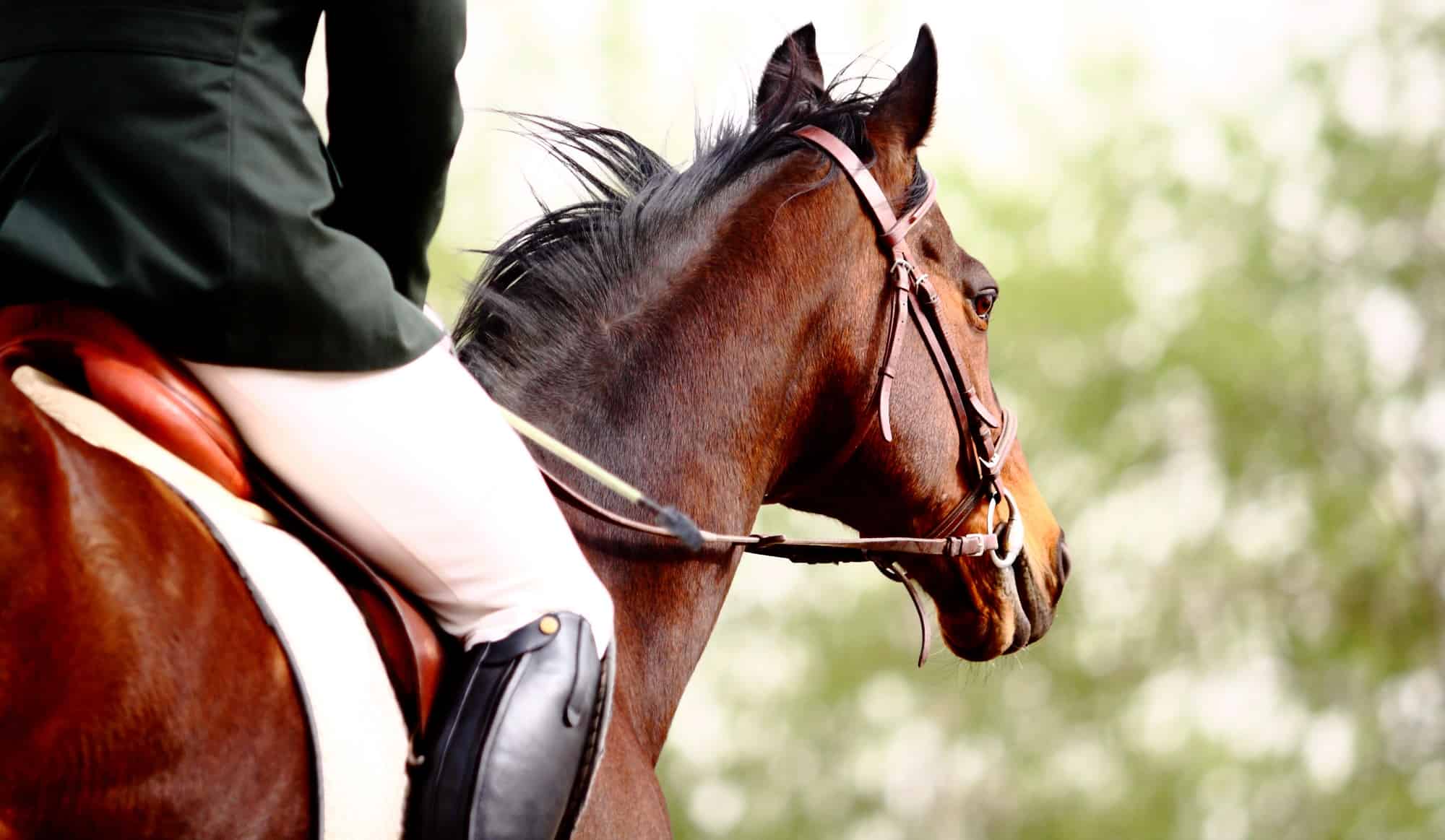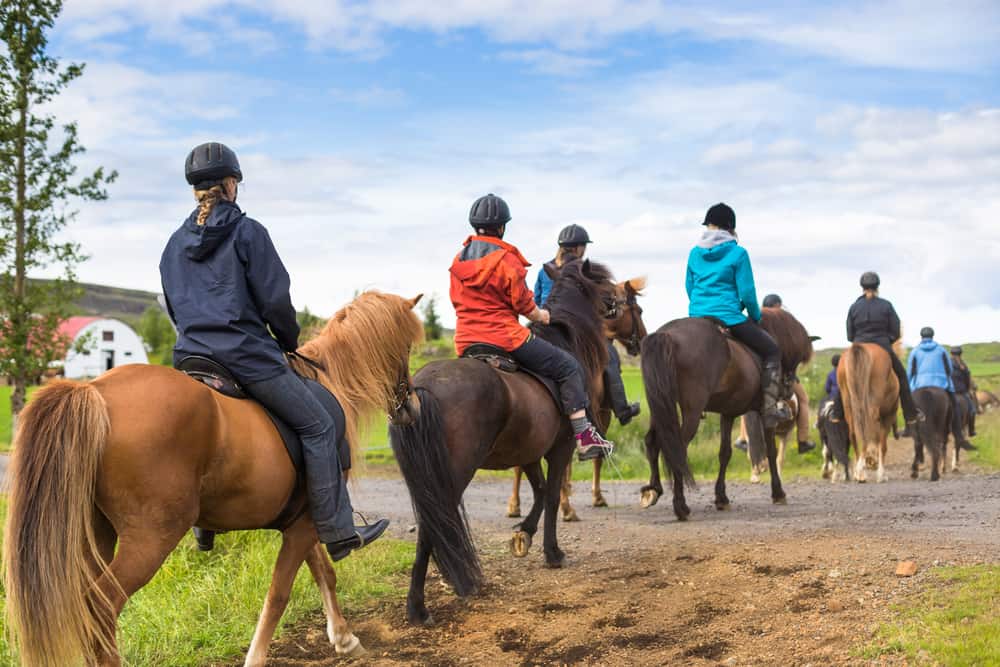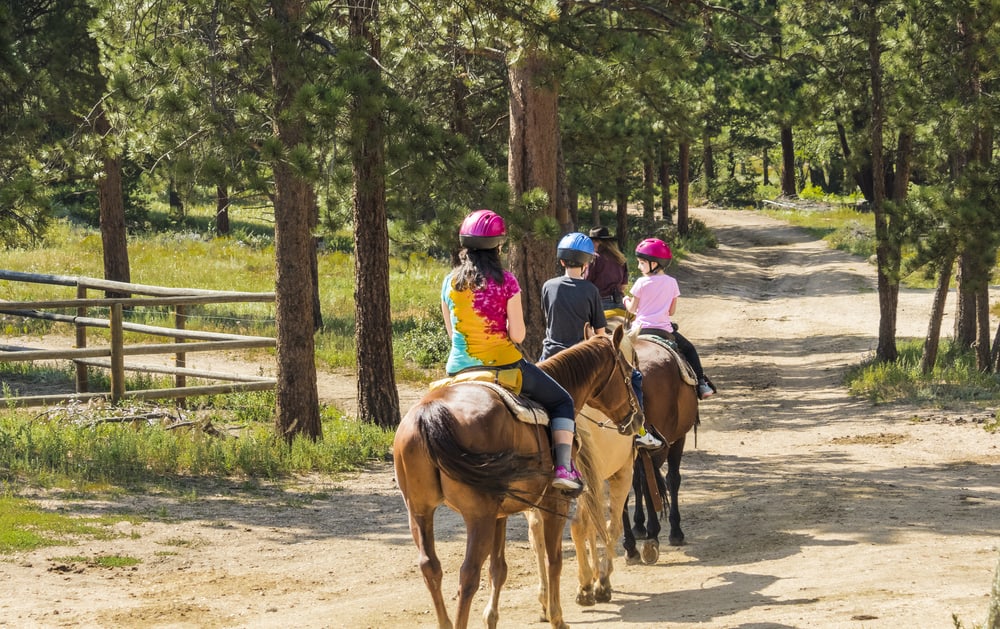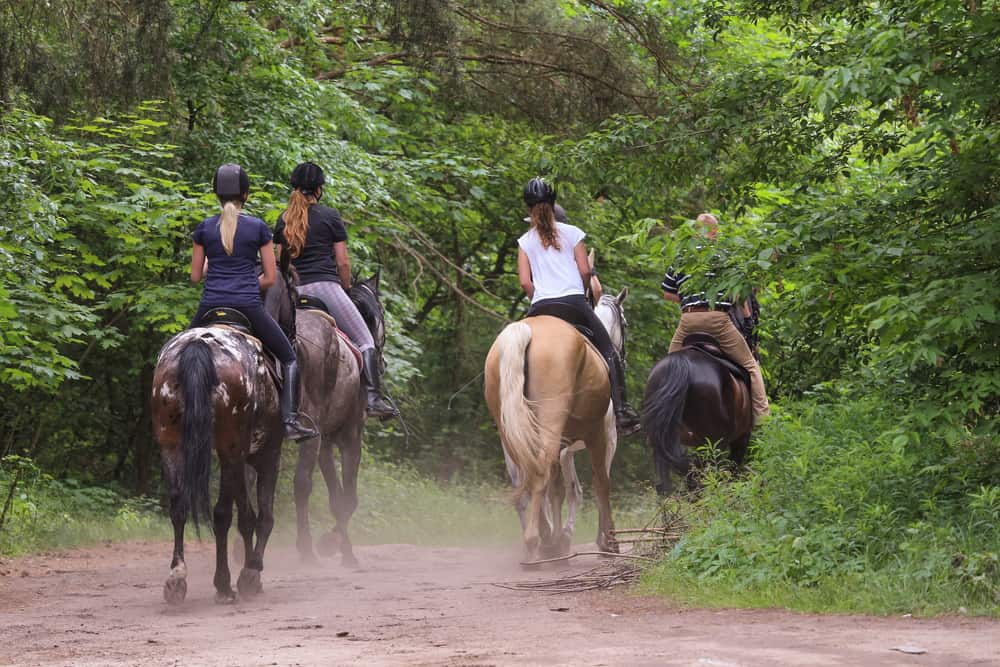Even though horses are large, powerful animals, they have limits. Any overloading can contribute to injuries and reduce their ability to perform.
Whether you look forward to experiencing horseback riding for the first time or you are a horse enthusiast, one of the essential questions you can ask is how much weight can a horse carry. Let’s take a look.
How Much Weight Can a Horse Carry
The key to a safe, comfortable ride is to watch for the horse muscle’s soreness. You should keep in mind that these animals start feeling significant strain and pain when carrying a person weighing more than 20% of its weight.
Therefore, 20% is the maximum horses’ weight carrying capacity, including the rider and saddle. Remember that an average western saddle weighs about 50 pounds (22.7 kg), where an English saddle is about 20 pounds (9 kg).
Keep in mind that these calculations are correct only for horses of regular weight, while the rules are different for underweight and overweight animals. Plus, stockier horses can carry more than the average one, so they are more suitable for heavier riders.
Another thing is horse age. Never let a young or old horse carries too much weight to prevent injuries. Remember that the horse will carry you easier than so-called dead weight. The reason is a better balance of living being for the horse’s back than regular cargo.
Proper Horses’ Sizes for Particular Riders
What is essential for safe riding is that the horse’s size is proportionate to your size. For example, if you are too tall for the horse, this disproportion will make you struggle to stay balanced during the whole horse ride.
On the other hand, you will have trouble using your legs effectively when you are too short for the horse. For example, inappropriately wrapping the legs around the horse’s body can make a problem for the horse.
The horse’s width and barrel size will be appropriate for you to ride safely only when wrapping your legs around its sides properly. That way, you can effortlessly command the horse by using the stirrups.
weight limit to ride a horse
As I have already mentioned, 20% represents the maximum percentage of a person and equipment’s weight comfortable for a horse to carry. In most cases, a rider should be not more than 15% of the horses’ weight.
Weight limit to ride a horse |
||
| Horse’s weight | Weight carrying capacity – 15% | Weight carrying capacity – 20% |
| 700 pounds (317.5 kg) | 105 pounds (47.5 kg) | 140 pounds (63.5 kg) |
| 800 pounds (363 kg) | 120 pounds (54.5 kg) | 160 pounds (72.5 kg) |
| 900 pounds (408 kg) | 135 pounds (61 kg) | 180 pounds (81.5 kg) |
| 1,000 pounds (453.5 kg) | 150 pounds (68 kg) | 200 pounds (91 kg) |
| 1,100 pounds (499 kg) | 165 pounds (75 kg) | 220 pounds (99.5 kg) |
| 1,200 pounds (544 kg) | 180 pounds (81.5 kg) | 240 pounds (109 kg) |
| 1,300 pounds (590 kg) | 195 pounds (88.5 kg) | 260 pounds (118 kg) |
| 1,400 pounds (635 kg) | 210 pounds (95 kg) | 280 pounds (127 kg) |
| 1,500 pounds (680 kg) | 225 pounds (102 kg) | 300 pounds (136 kg) |
| 1,600 pounds (726 kg) | 240 pounds (109 kg) | 320 pounds (145 kg) |
| 1,700 pounds (771 kg) | 255 pounds (115.5 kg) | 340 pounds (154 kg) |
| 1,800 pounds (816.5 kg) | 270 pounds (122.5 kg) | 360 pounds (163 kg) |
| 1,900 pounds (862 kg) | 285 pounds (129 kg) | 380 pounds (172 kg) |
| 2,000 pounds (907 kg) | 300 pounds (136 kg) | 400 pounds (181.5 kg) |
Anyhow, if you want to determine what horse type can adequately carry you, you should use one of the online calculators to check it.
An Ideal Horse for Riding
The most frequent traits taken into consideration when purchasing a horse for riding include:
Breed
Focusing on breeds is essential since some of them are more slender such as the Arabian, while some are stockier, like the Haflinger. You should pick out the one that is the best option for you and your riding skills.
Confirmation
Confirmation is the horse shape or structure and includes its proportions. When purchasing a horse, you should have in mind its exact purpose since it determines the weight carrying capacity.
Training
An inadequately trained horse will require a lighter rider since it is not balanced as an experienced horse.
Fitness
A horse that has never been used for regular work and wasn’t running freely for a long time is probably in poor shape. Therefore, it will be more suitable for a lighter rider.
Body condition
Body condition refers to how much fat is in the horse’s body. An underweight or overweight horse always requires a lighter rider since its carrying capacity is not at its peak.
Horse’s age
A horse’s age also determines the carrying capacity, as the very young and old horses require a lighter rider.
Horse breed that fits particular rider height |
|
| Rider height | Horse and pony breeds |
| Short rider, up to 65 inches (165 cm) | Haflinger, Appaloosa, Fjord, Dales Pony, Highland Pony, Irish Cob, Hanoverian |
| Average rider from 65 to 70 inches (165 – 178 cm) | Irish Draught, Percheron, Fresian, Irish Cob, Haflinger, Fjord, Draft Cross, Cleveland Bay, Quarter Horse, Lusitano, Paint, Hanoverian, Knabstrupper, Holsteiner, Morgan |
| Tall rider, over 70 inches (178 cm) | Clydesdale, Irish Draught, Percheron, Draft Cross, Cleveland Bay, Hanoverian, Holsteiner, Knabstrupper |
Rider’s age
When purchasing a horse for a younger rider, choosing a taller or stockier horse is the optimal solution. It will be in balance with the rider’s future adult size.
On the other hand, a shorter horse is more suitable for seniors, making mounting and dismounting easier without risk of injuries.
The Best Horse Breeds for Beginners
Horses that are easy to train and have good memories of training are the best type for new riders.
Morgan
Morgan is a kind and courageous breed that is eager to please. It will work hard with any riders and be consistent in figuring out their wishes.
Friesian
People often compare Friesian with a Labrador because of its playful personality and tendency to roll around in the mud. It is the best option for a rider who wants a devoted partnership with the horse since this animal is loyal to the owner.
Icelandic
Many new riders tend to get scared of riding too big horses, so Icelandic horse is a nice compromise. Its height makes it easier to get in and out of the saddle, while a smooth version of a quick walk makes it comfortable for a rider, particularly an inexperienced one.
Tennessee Walking Horse
Its walk is so smooth that you can have a cup of tea while riding. Also, it is an excellent solution for those who suffer from saddle pain after a long riding.
Connemara Pony
Connemara Pony was initially a farm helper. Since this horse is approximately 14 hands or 56 inches (1.42 m) tall, it is excellent for accommodating shorter equestrians. Even though it is of a smaller breed, this pony is an athletic animal and can be your loyal partner in future competitions.
Welsh Cob
Breeders got Welsh Cob by crossbreeding the Welsh Mountain Pony and larger breeds like the Arabians or Thoroughbreds. It is often seen in European riding schools because it is adaptable to many disciplines.
The Best Horse Breeds for Plus-sized Riders
Even though the horse size and strength can vary within the same breed, some horses are considered the best option for plus-size riders. They have good, solid hooves, thicker bones, and are generally stronger.
Appaloosa
Appaloosas fall under the category of shorter horses, so they are more suitable for the shorter, plus-sized riders. They mostly have calm personalities so that they can be the right match for all-level riders. This breed is mostly used in western disciplines such as cutting and reining.
Clydesdale
Clydesdales are the best horses for tall, plus-sized riders since they are tall and have large barrels. Despite their friendly personalities, they are not suitable for all riding types. Jumping is not one of their strengths, but they are a perfect option for pleasure riding on trails, pulling, and driving.
Dales Pony
Dales Ponies are a good match with shorter and average plus-size riders. They are famous for their brave personality and are remarkable in driving competitions. They are also good jumpers, great for dressage, and are fit for recreational riding.
Hanoverian
Even though most of them aren’t very stocky, Hanoverians are fit for most size riders. They have good athletic ability and are amazing sport horses. Hence, they are used as jumpers for dressage and events.
The Horse’s Purpose
Another fundamental point considered when purchasing a horse is to see whether it is suitable for the discipline it will be used. For example, barrel racing or gymkhanas are more appropriate for shorter horses, while dressage is more appropriate for taller animals.
Moreover, some disciplines require more horse workload. That includes the factors like how often and how long you ride, and how intense the ride is. The more intense the work is, the less weight is possible for the horse to carry.
Summary
Average riders are heavier nowadays, so the goal is to ensure that the horse is not overburdened. Consequently, the performance in the tasks you give your animal will be better if you respect its weight limits. That will result in having a loyal partner in your undertakings in the future years.












Thank you so much for refusing to allow that woman who was 240 plus to ride your horses. How selfish she is, thinking that a poor animal should be made to carry her around, when it would cause discomfort or harm to the animal. Thank you so much for thinking of your animals.
My kindness for animals extends to humans.
Everyone’s reading comprehension is just shite… she was not complaining about not being allowed to ride the horse, SHE COMPLAINED ABOUT THE WAY IT WAS HANDLED. You can take care of your animals all you want, but it is not fair to put people aside in the process
Wholeheartedly agree. Thank you too deephollowranch. I second this comment.
Thank you for the comprehensive guide.
And thank you for taking your Horse’s well being into consideration when you had the larger individual want to ride it. I have no sympathy for that type of self centeredness
God bless the horse! I don’t know if you have Clydesdales on site, but this would constitute animal cruelty in this reader’s opinion. Perhaps, purchasing a Shire horse would be more fitting. I also recommend titanium mounting blocks for the “Heft Beef Critters” who want to test the limits of the poor horse.
Thank you for having the time and effort on sharing this amazing blog with us! I’ll probably read more of your articles.
Can we change “Confirmation” to “Conformation”? Unless your horse has been a regular church-goer… 😛
In any case, both the horse’s conformation and the rider’s balance and skill play an important role in the 15%-20% range assessment. Better fitting tack will also allow for carrying more weight comfortably.
I would not necessarily put a heavy rider on a draft horse that has been bred to *pull* heavy loads rather than *carry* them. A long back makes carrying weight on it more difficult, body weight notwithstanding. Physics, especially the mechanics of levers, must be taken into consideration.